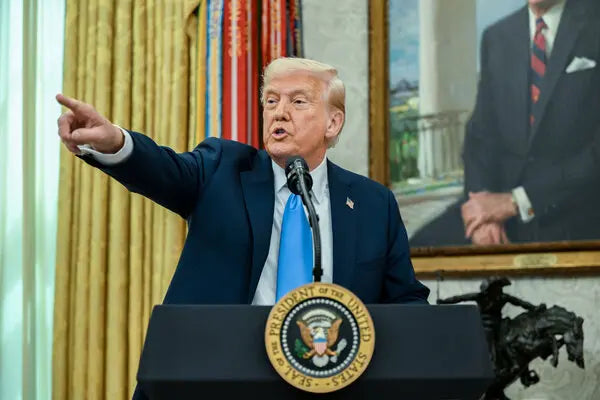In the swirling vortex of American politics, where norms bend like reeds in a storm, few voices cut through the din quite like Steve Bannon’s. The former Trump strategist and self-proclaimed architect of the MAGA movement has long been a provocateur, but his recent declarations about a potential third term for President Donald J. Trump have ignited a firestorm of debate.
As Trump settles into his second term—inaugurated just months ago in January 2025—Bannon is already auditioning the sequel. “He’s gonna get a third term,” Bannon proclaimed in a October 2025 interview with The Economist, his eyes gleaming with the fervor of a man who sees history not as a straight line, but as a loop he can tighten. “Trump is gonna be president in ‘28, and people just ought to get accommodated with that.” It’s not hyperbole; it’s a vow. And with Bannon at the helm of the narrative, the idea isn’t just floating—it’s being engineered.
Bannon’s pitch isn’t born in a vacuum. Trump himself has toyed with the notion since early in his second term. In a March 2025 NBC News interview, the president quipped that he was “not joking” about a third run, hinting at “methods” to make it happen despite turning 82 by the end of his current stint.
By August, he’d softened to “probably not,” but the seed was planted. Fast-forward to October, and Bannon is tilling the soil. Speaking on NewsNation’s Batya!, he teased “many different alternatives” to sidestep the constitutional roadblock. On his War Room podcast and at Young Republican galas, he’s rallied crowds with cries of “Trump 2028,” claiming his lawyers have unearthed loopholes in the fine print. The odds? “We had longer odds in ‘16 and longer odds in ‘24 than we’ve got in ‘28,” Bannon boasted to *People* magazine. For a man who once orchestrated a populist uprising from the shadows, this feels less like fantasy and more like foreplay for a constitutional cage match.
At the heart of Bannon’s gambit lies the 22nd Amendment, ratified in 1951 as a firewall against the kind of extended reign Franklin D. Roosevelt enjoyed—four terms, cut short only by death. Its language is deceptively crisp: “No person shall be elected to the office of the President more than twice.”
Elected. That single word, Bannon and his allies argue, is the skeleton key. Trump won in 2016, lost in 2020 (a loss still decried by MAGA as the “big steal”), and triumphed again in 2024. Non-consecutive terms, they posit, don’t trigger the twice-elected cap. It’s a reading that constitutional scholars like Hofstra’s James Sample dismiss as “far-fetched,” akin to threading a camel through the eye of a needle. But Bannon isn’t pitching to law professors; he’s preaching to the converted, who see the amendment not as ironclad but as interpretive clay.
Yet the most audacious thread in this tapestry—and the one Bannon’s inner circle whispers is the “most likely” path—involves a judicial jujitsu move that would make even the boldest originalists blush. Imagine this: A cadre of Trump-aligned litigants, backed by sympathetic state attorneys general, files a sweeping challenge. They invoke judicial review—the Supreme Court’s power to interpret the Constitution—and zero in on 2020. What if the election wasn’t just stolen, but *null*? Evidence of widespread fraud, they claim, renders Biden’s victory illegitimate from the jump. Trump, in this fever dream, wasn’t defeated; he was interrupted.
The Court—now boasting a 6-3 conservative majority, with Trump appointees like Neil Gorsuch and Amy Coney Barrett—steps in. In a landmark ruling, it declares the 2020 results fraudulent, vacating Biden’s term retroactively. Trump, never truly “elected” out of office, retains continuity. His 2016 victory flows seamlessly into 2024, unmarred by an invalid interregnum. Ergo, no third *election*—just a restoration. The 22nd Amendment? Untouched, technically. It’s a narrative that aligns perfectly with Trump’s enduring grievances, and Bannon has nodded to it in off-the-record war rooms, sources say, framing it as “divine will” correcting a cosmic error.
This isn’t mere speculation; it’s the logical endpoint of years of election-denial infrastructure. Bannon’s “plan,” unveiled in drips across podcasts and private briefings, hinges on this very leverage. Repealing the 22nd outright? That’s the blunt instrument—requiring two-thirds of Congress and three-quarters of states, a Herculean lift even for a unified GOP. Succession games, like a puppet VP (think JD Vance) resigning to hand the reins back? Clever, but vulnerable to public backlash. No, the fraud-ruling route is surgical: It weaponizes the judiciary Trump himself fortified, turning grievance into governance. Critics howl that it’s a blueprint for authoritarianism, eroding the peaceful transfer of power. Bannon? He calls it justice.
But peel back the layers, and Bannon’s rhetoric reveals a deeper philosophical assault on the term-limits edifice itself. The 22nd Amendment, he implies—and some unearthed legal memos from his orbit explicitly argue—isn’t just flawed; it’s unconstitutional. How? By arrogating power from “We the People,” the sovereign heart of the Constitution’s preamble. The framers envisioned a republic where voters, not amendments, dictate duration. Article V empowers amendments, yes, but none can “supersede the authority over the Constitution itself,” as one Bannon-aligned brief posits.
Term limits, in this view, infringe on the electorate’s primal right to choose “who we prefer, for as long as we prefer.” It’s a populist purism: FDR’s four terms weren’t tyranny; they were democracy in action, wartime exigency demanding continuity. To impose artificial ceilings is to infantilize the masses, assuming they can’t spot a would-be king.
This isn’t advocacy for eternal Trump—Bannon’s camp insists we’re viewing objectively, a dispassionate autopsy of structural rot. And there’s merit in the critique. Term limits, while curbing executive overreach, have birthed unintended monsters. Legislators cycle out too fast, ceding the stage to unelected mandarins in the sprawling federal bureaucracy. Shadowy agencies—think the deep state Bannon rails against—wield unchecked power, unmoored from ballots or scrutiny.
Corruption festers not in the spotlight of a single Oval Office tyrant, but in the dim corridors of faceless fiefdoms. With a term-limited president, accountability evaporates: We know the face of potential despotism, and history offers recourse—impeachment, elections, even revolution. But insulated bureaucrats? They’re ghosts, perpetuating policy inertia and elite capture without a single vote to their name. “It’s effectively worse,” Bannon argued in a April 2025 NPR clash, “because at least with a head of state holding real power, we can see the strings and cut them if needed.”
As 2028 looms, Bannon’s symphony swells. “We have to finish what we started,” he told LiveMint, casting Trump as a once-in-a-century instrument of destiny. The plan, he promises, will crystallize post-midterms—perhaps a constitutional convention, perhaps that Supreme Court thunderbolt. Detractors see a crisis barreling down the tracks, a “huge” one, as Alabama’s al.com warns. But for Bannon’s faithful, it’s redemption: A third act not despite the founders, but because of them.










Share:
Silencing the Truth: The Unprecedented Gag Order in the Charlie Kirk Assassination Case
The SNAP Shutdown: A Tipping Point for Dependency, Fraud, and Rising Crime